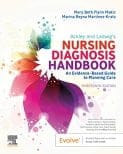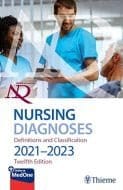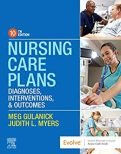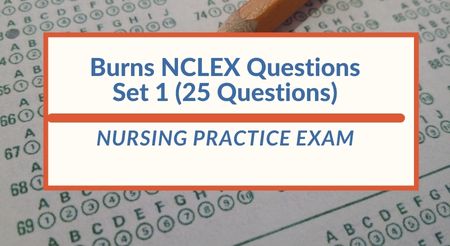Last updated on January 26th, 2024 at 05:26 pm
Burns NCLEX Questions Test Bank
Burns Nursing Diagnosis and Nursing Care Plans
Results
Last updated on January 26th, 2024 at 05:26 pm
Last updated on January 26th, 2024 at 05:26 pm
#1. A client with partial-thickness burns to the face and hands is admitted to the burn unit. Which intervention should the nurse include in the client's plan of care?
Rationale: Immobilizing the client’s hands with splints is essential to prevent contractures, as burns to the hands can result in scar tissue formation and limited mobility.
#2. When caring for a client with full-thickness burns, the nurse should anticipate which priority intervention?
Administering intravenous fluids is the priority intervention for clients with full-thickness burns to maintain adequate fluid balance and prevent hypovolemic shock.
#3. A client is admitted to the emergency department with suspected inhalation injury. Which intervention should the nurse prioritize?
Administering oxygen therapy is the priority intervention for a client with suspected inhalation injury to improve oxygenation and respiratory function.
#4. A client with burns sustained in a house fire is brought to the emergency department. The nurse notes darkened oral and nasal mucosa upon assessment. Which action should the nurse take?
Administering humidified oxygen therapy is necessary for clients with darkened oral and nasal mucosa due to smoke inhalation, as it helps humidify the respiratory tract and improve gas exchange.
#5. A client with burns to the lower extremities is scheduled for debridement. Which intervention should the nurse perform before the procedure?
Administering a premedication for pain is essential before debridement to ensure the client’s comfort during the procedure.
#6. The nurse is teaching a client about wound care for partial-thickness burns. Which statement by the client indicates a need for further education?
“I need to change the dressing daily to promote healing” is incorrect because daily dressing changes can disrupt the healing process. Dressing changes for partial-thickness burns are typically performed every 2-3 days.
#7. The nurse is assessing a client with full-thickness burns to the face and chest. Which finding requires immediate intervention?
Singed nasal hair and hoarse voice suggest inhalation injury, which requires immediate intervention due to potential airway compromise.
#8. A client with burns is prescribed silver sulfadiazine cream. What is the primary purpose of this medication?
Silver sulfadiazine cream is used to prevent infection in burn wounds due to its antimicrobial properties.
#9. A client is being treated for partial-thickness burns to the upper body. Which laboratory result should the nurse monitor closely?
White blood cell count should be monitored closely for signs of infection, as the client is at risk for developing sepsis.
#10. A client with burns is experiencing anxiety and restlessness. Which intervention should the nurse implement first?
Providing a quiet and calm environment is the initial intervention to promote relaxation and reduce anxiety in a client with burns.
#11. A client with burns is at risk for impaired skin integrity. Which action should the nurse take to prevent skin breakdown?
Turning and repositioning the client every 2 hours helps prevent pressure ulcers and skin breakdown in clients with burns.
#12. A client is admitted to the burn unit with full-thickness burns. Which priority intervention should the nurse implement first?
Initiating fluid resuscitation is the priority intervention in clients with full-thickness burns to restore fluid balance and prevent hypovolemic shock.
#13. A client with burns has an open wound that is not healing well. Which nutrient deficiency should the nurse suspect?
Vitamin C deficiency can impair wound healing, collagen synthesis, and tissue repair in clients with burns.
#14. A client with partial-thickness burns is prescribed a topical antimicrobial cream. What is the primary purpose of this medication?
A topical antimicrobial cream is used to prevent infection in burn wounds and reduce the risk of complications.
#15. The nurse is caring for a client with full-thickness burns. Which finding requires immediate intervention?
A blood pressure of 90/60 mmHg suggests hypovolemia and requires immediate intervention to prevent hypovolemic shock.
#16. A client with burns is receiving fluid resuscitation. Which assessment finding should the nurse report immediately?
The presence of crackles in the lungs suggests fluid overload, which can occur as a complication of fluid resuscitation. It should be reported immediately.
#17. A client with burns is prescribed a nonsteroidal anti-inflammatory drug (NSAID) for pain management. Which instruction should the nurse provide to the client?
“Take the medication on an empty stomach” is the correct instruction for clients taking NSAIDs, as taking them with food can decrease their effectiveness.
#18. The nurse is caring for a client with partial-thickness burns. Which action should the nurse take when changing the client's dressings?
Removing the dressing gently to prevent further tissue damage is crucial when changing the dressings for clients with partial-thickness burns.
#19. A client with burns is prescribed silver-impregnated dressings. What is the primary purpose of these dressings?
Silver-impregnated dressings are used to prevent infection in burn wounds due to their antimicrobial properties.
#20. A client with burns is scheduled for a dressing change. Which intervention should the nurse implement during the procedure?
Administering an analgesic before the procedure is necessary to ensure the client’s comfort during the painful dressing change.
#21. A client with burns is receiving fluid resuscitation. The nurse suspects fluid overload based on which assessment finding?
Peripheral edema suggests fluid overload and should be assessed when monitoring clients receiving fluid resuscitation.
#22. A client with burns has a positive Homans' sign during the assessment. What does this finding indicate?
A positive Homans’ sign indicates the possibility of a deep vein thrombosis (DVT) and should be further investigated.
#23. A client with burns is experiencing severe pain. Which medication should the nurse anticipate administering?
Fentanyl is a potent opioid analgesic commonly used for severe pain relief in clients with burns.
#24. A client with burns is receiving enteral nutrition. Which action should the nurse take to prevent aspiration during feeding?
Elevating the head of the bed at a 45-degree angle during feedings helps prevent aspiration in clients with burns.
#25. A client with burns asks the nurse about the risk of infection. Which response by the nurse is appropriate?
“Infection is a common complication of burns” is an appropriate response, as burn wounds are highly susceptible to infection, especially when not properly managed and treated.

Best Nursing Books and Resources
These are the nursing books and resources that we recommend.
NurseStudy.net is a participant in the Amazon Services LLC Associates Program. Included below are affiliate links from Amazon at no additional cost from you. We may earn a small commission from your purchase. Please see our Privacy Policy

The Nursing Diagnosis Handbook E-Book: An Evidence-Based Guide to Planning Care
This is an excellent reference for nurses and nursing students. While it is a great resource for writing nursing care plans and nursing diagnoses, it also helps guide the nurse to match the nursing diagnosis to the patient assessment and diagnosis.
This handbook has been updated with NANDA-I approved Nursing Diagnoses that incorporates NOC and NIC taxonomies and evidenced based nursing interventions and much more.

NANDA International Nursing Diagnoses: Definitions & Classification, 2021-2023
All introductory chapters in this updated version of a ground-breaking text have been completely rewritten to give nurses the knowledge they require to appreciate assessment, its relationship to diagnosis and clinical reasoning, and the goal and use of taxonomic organization at the bedside.

Nursing Care Plans: Nursing Diagnosis and Intervention
It contains more than 200 care plans that adhere to the newest evidence-based recommendations.
Additionally, it distinguishes between nursing and collaborative approaches and highlights QSEN competencies.


